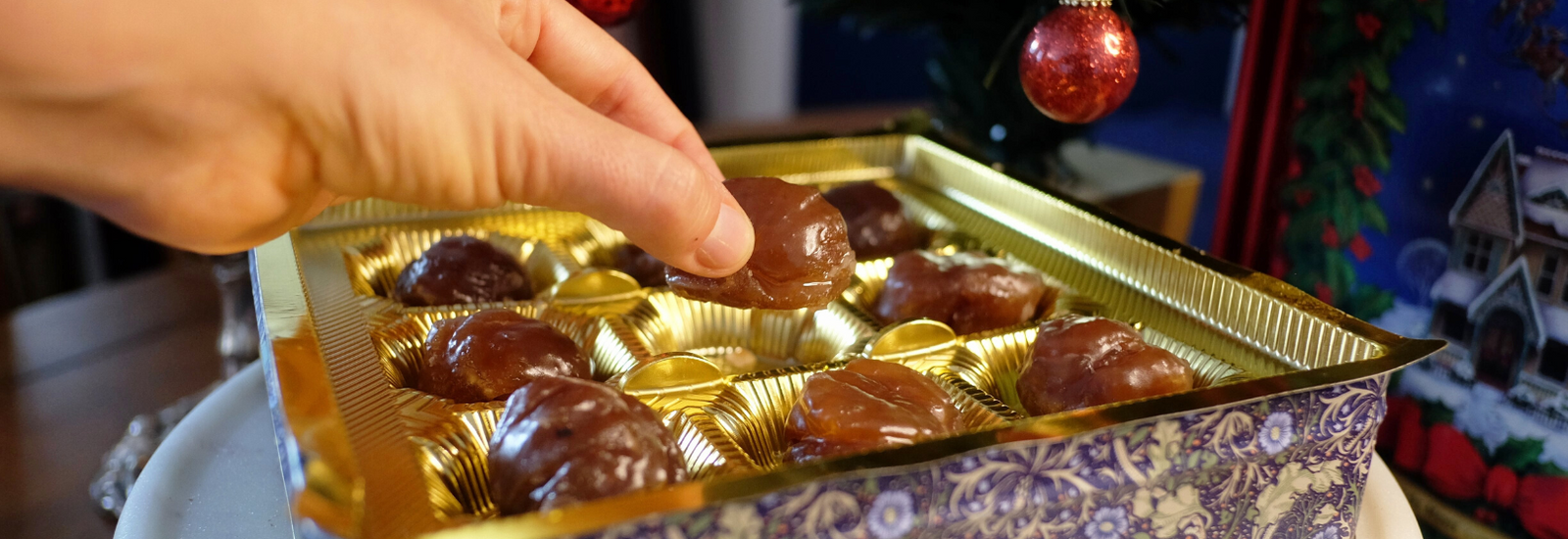Chestnuts are such a lovely treat in winter. And even though growing up I have always associated chestnuts with Christmas and with sweets, they really are wonderfully versatile and full of benefits.
Whilst it has never been scientifically proven that chestnuts get rid of spiders if you put them in the corners of the rooms in your house, the health benefits of chestnuts are real and well known.
Are chestnuts good for you? Unlike other nuts, chestnuts are starchy as opposed to fatty. Raw, unpeeled European chestnuts contain the following values per 100g: 213 kcal, 45.5 grams of carbohydrates, 2.4 grams of protein and 2.2 grams of fat. In comparison, 100g of walnuts contain 654 kcal, 14g of carbs, 15g of protein and 65g of fat.As such, in terms of nutrition chestnuts are actually closely comparable to starchy vegetables like sweet potatoes, sweet corn or plantains. They are the only nut with significant amounts of Vitamin C, and good source of dietary fibre, with 8.1 grams per 100g. They also contain no cholesterol and are gluten free. I have a dear friend who suffers from a nut allergy; she can enjoy my wonderful Marrons Glaces without troubles, but I would always advise you to check with your doctor first if you have a nut allergy.
In the UK, sweet chestnuts are in season starting October and have their peak in December -which is why there is such a strong connection between chestnuts and Christmas treats! If you decide you want to go and pick them yourself, you can easily differentiate the sweet chestnut from the horse chestnut: the shell of the sweet chestnut is densely covered with small needles, almost looking like a little hedgehog. You definitely do not want to pick horse chestnuts, whose shell is much smoother and with only a few warts: they are toxic and inedible.
If you want to harvest your chestnuts in nature, make sure to always and only pick chestnuts that are still within their (recognisably spiky) shell! Another way to tell the sweet chestnuts and the horse chestnuts apart outside of their shell, is that the sweet and edible variety will have a small, almost tufty point, while the horse chestnuts are smooth and roundish all over. But why go through the hassle? Most supermarkets in the UK, including Sainsbury’s, Tesco and Waitrose, nowadays carry chestnuts in their aisles: canned, vacuum-packed and, more rarely, even pureed. Merchant is a common brand that produces whole vacuum-packed chestnuts and chestnut puree and is quite widespread in supermarkets; but chestnuts are also easy to buy online, where you can find them prepared in many ways.

Now, the dreaded question: can you eat raw chestnuts? I grew up eating raw chestnuts back in Italy; I used to sit down in the kitchen, holding a cup of Ciobar hot chocolate (which is the absolute best brand of ready-made hot chocolate if you ask me - you will have to try to believe me!), watching my mum peel the raw chestnuts and handing them to me for a snack. However, they have to be a specific variety and the taste takes some accustoming to: they can be slightly bitter, even astringent, and they can be a bit hard to digest. You have to let them sit on your kitchen counter for at least a few days to ripen them and they are also quite difficult to peel: my mum was able to do it just thanks to many years of practice and really strong hands.
It is much better -and much more enjoyable- to cook your chestnuts: boiling them is really easy, just wash them and score them with a small x incision on one side, transfer them to a pot of boiling water and let them cook for about 5-10 minutes. When they are cool enough to handle, you can peel them easily. They won’t be as classic or appealing as roasted chestnuts, but boiling them is a great way to soften them rapidly.
Roasting chestnuts is really the best way to enjoy them (besides, of course, Lavolio Marron Glaces). You can, of course, roast them on an open fire (listening to the wonderful song by Nat King Cole would be a great idea), but if you do not have an open fire on hand, you can roast them in your oven: preheat it to 200 C, score the chestnuts to prevent them from bursting and to make them cook faster, and roast on a baking sheet, sprinkling them with a little water, for about 15 to 20 minutes. When they are done, wait a few minutes and then crush the skins by squeezing the chestnuts in a towel until they crack. Leave them in the towel for a few extra minutes and then remove the skin entirely, and enjoy the chestnuts while they are still wonderful and aromatic and warm.


